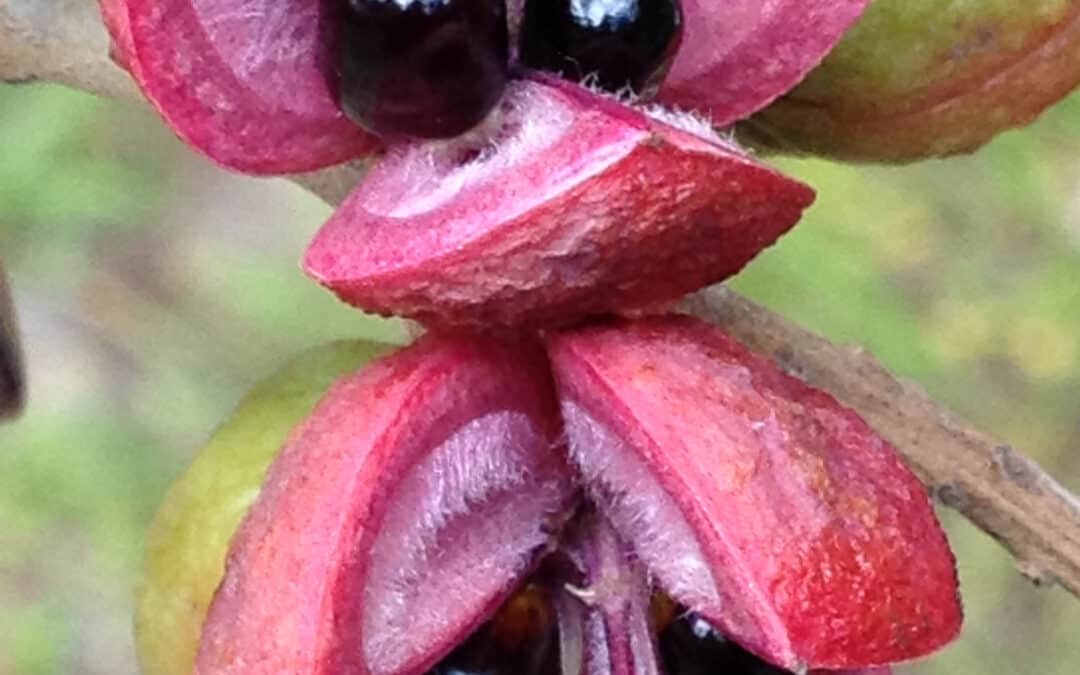
CPC National Meeting
Earlier this month Amelia Martyn Yenson shared an online presentation on the Germplasm Guidelines at the US Center for Plant Conservation National Meeting which had the theme “Celebrating conservation milestones”.

Earlier this month Amelia Martyn Yenson shared an online presentation on the Germplasm Guidelines at the US Center for Plant Conservation National Meeting which had the theme “Celebrating conservation milestones”.
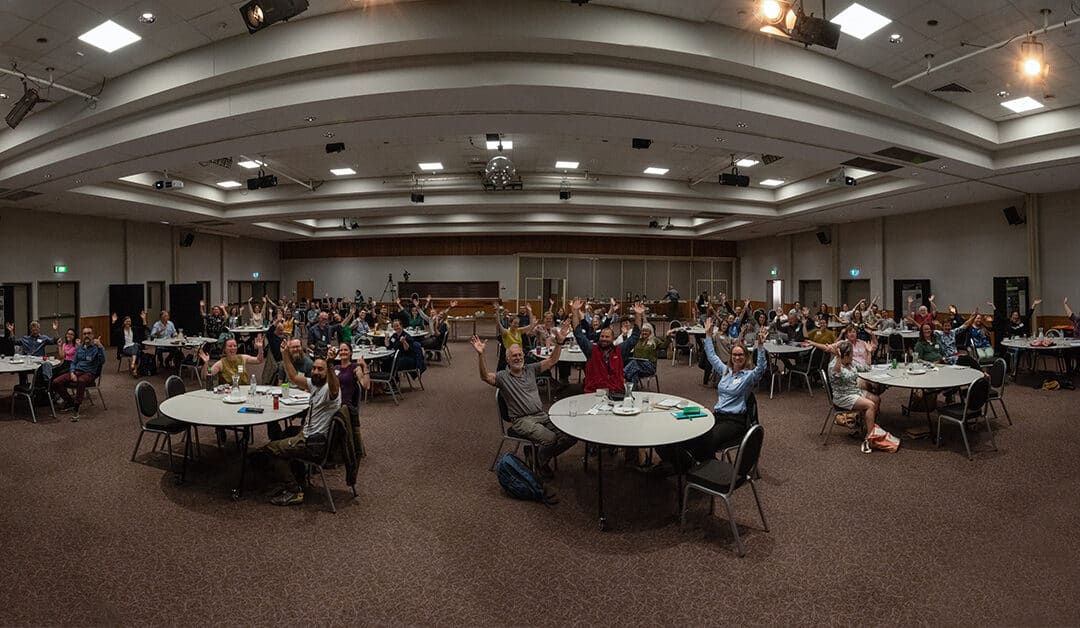
We’d like to thank everyone who attended the 13th Australasian Plant Conservation Conference earlier this month. We had 94 people join us in Albury and 56 online attendees. We’ve heard some great feedback so far that delegates enjoyed the presentation topics, had some great discussions and found the in-person networking really valuable. Our Conference Evaluation Survey is still open, send us your conference feedback so we can continue making events which suit our community’s needs.
Recordings from the Conference will be made available to delegates next week, keep an eye on your inbox for the access password. For those who did not attend the conference but would like to purchase access to the recordings you can do so at our website, more details coming soon.
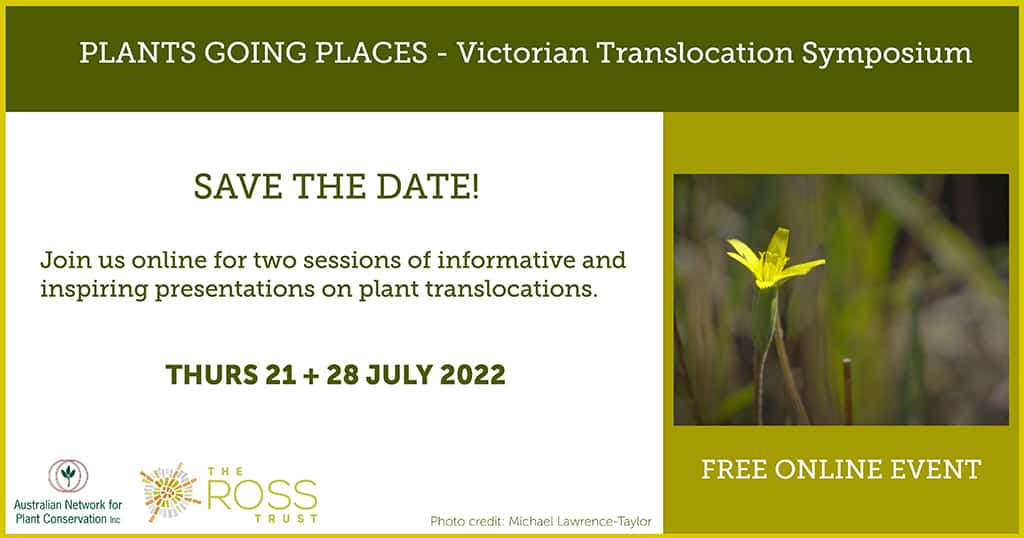
Online Symposium – 21 & 28 July 2022
On Thursdays 21 and 28 July 2022 we held our Victorian Translocation Symposium over Zoom. It included presentations from experts and experienced practitioners in plant translocations and was based on the ANPC’s Guidelines for the Translocation of Threatened Plants in Australia.Thanks to the support from the Ross Trust this event was free for everyone to attend.
Please download the full program here. We look forward to seeing you online. The recordings from this symposium are available on our YouTube channel here.
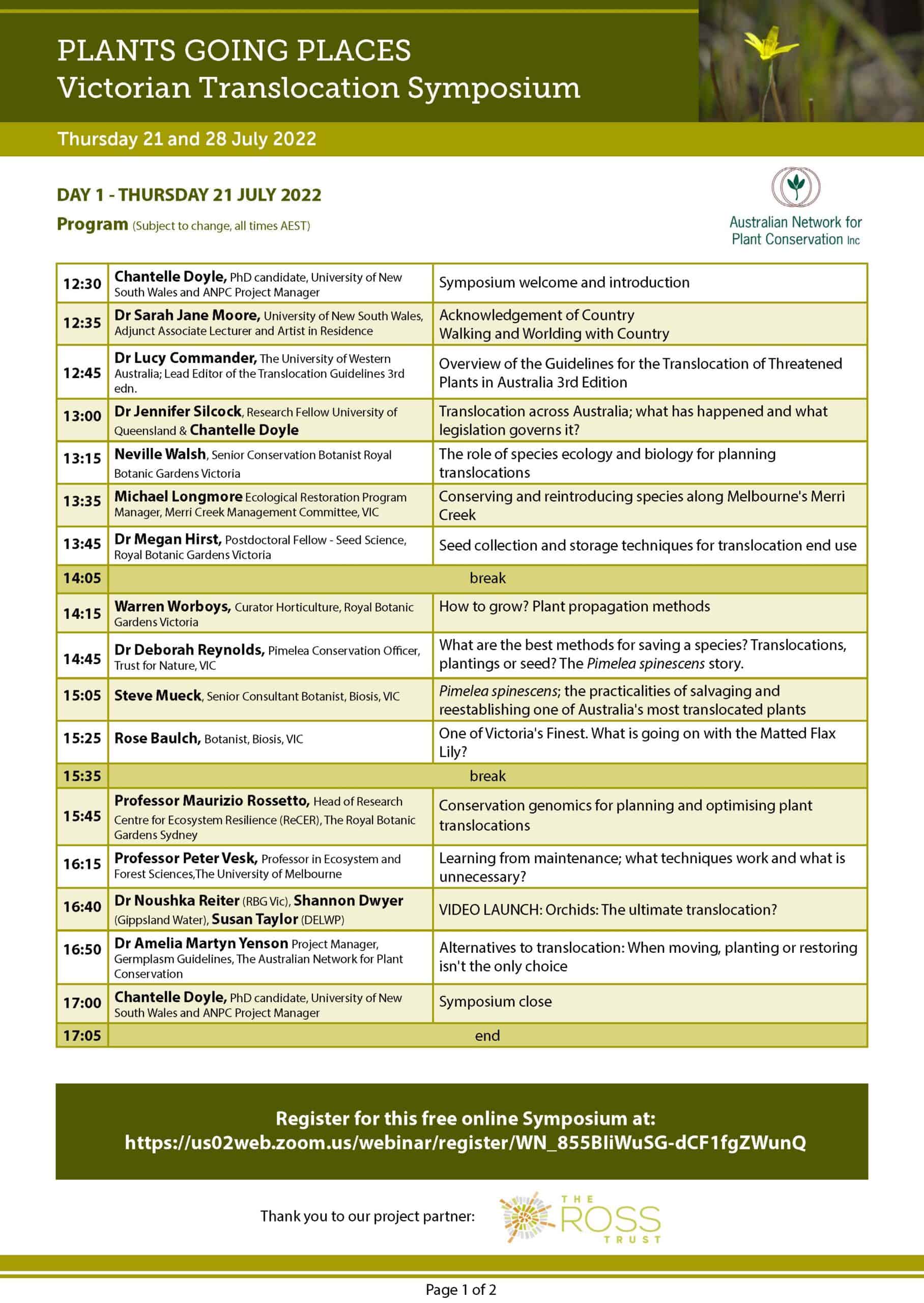
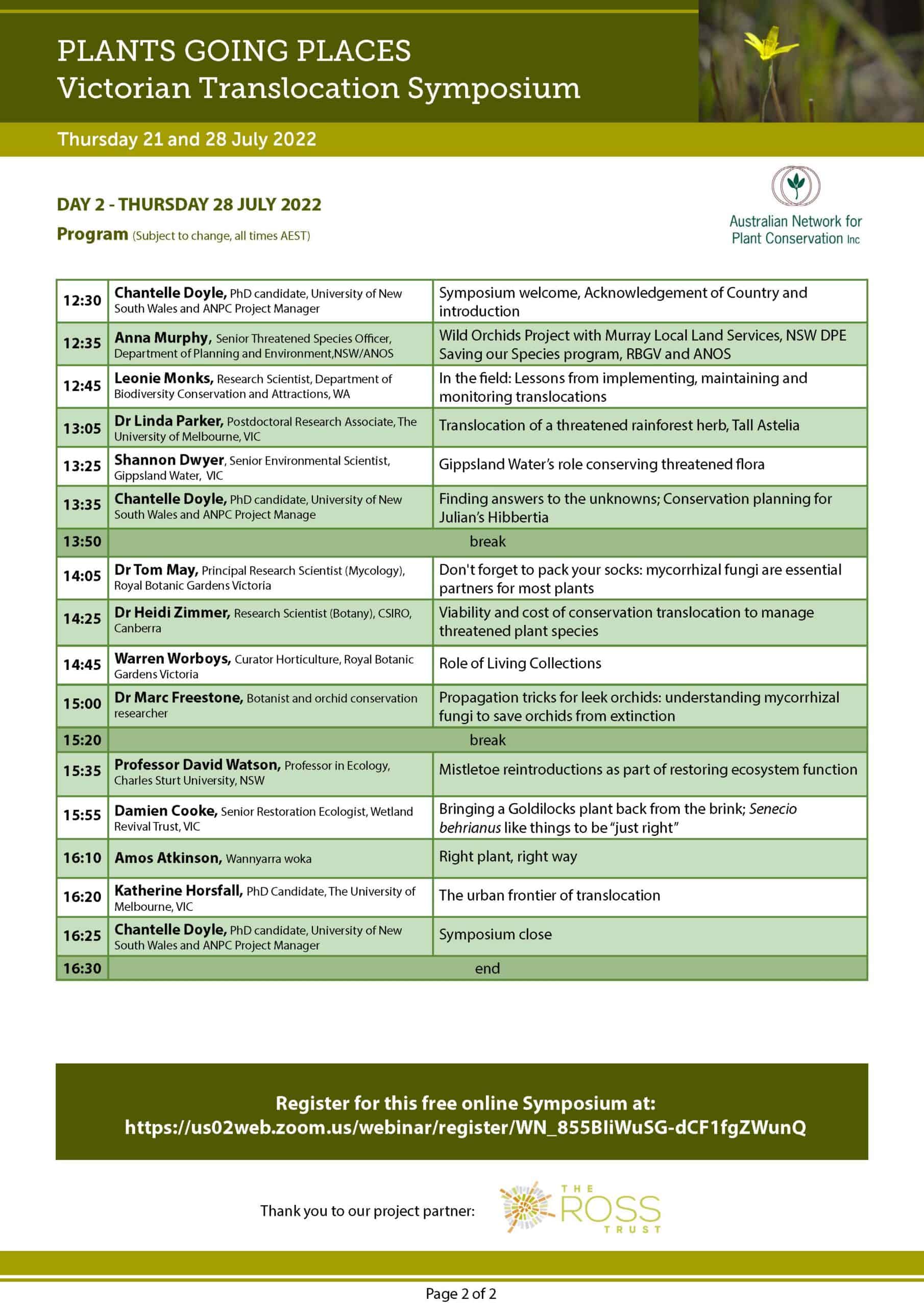
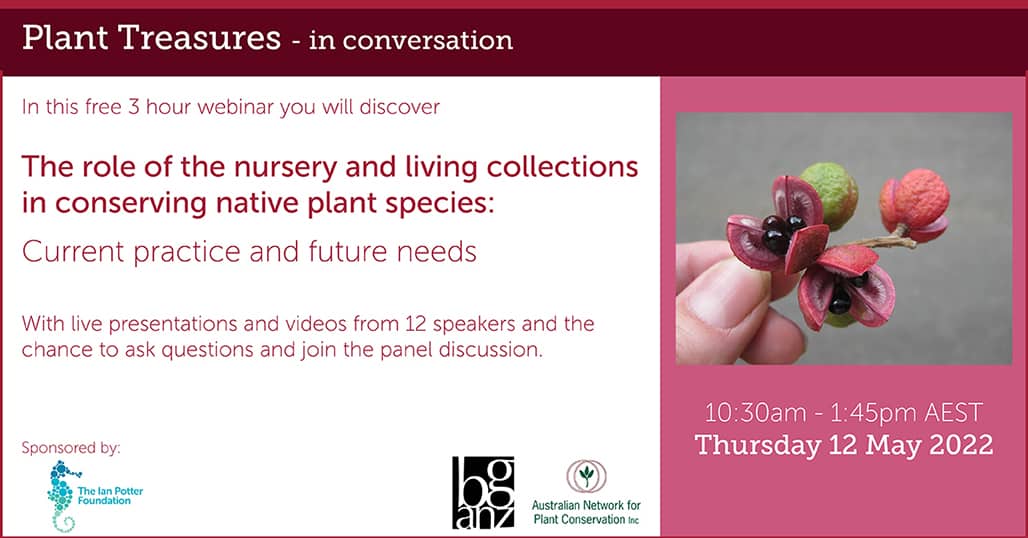
The latest webinar in our series ‘Plant treasures – in conversation’ was held on Thursday 12 May 2022. This special extended webinar focused on ‘The role of the nursery and living collections in conserving native plant species’ while highlighting current practice and future needs. You can watch the recording on our YouTube channel here.
The webinar was opened by the Germplasm Guidelines project manager, Amelia Martyn Yenson. John Arnott (Curator of horticulture at the Royal Botanic Gardens Victoria and BGANZ Council Representative for Victoria) then gave a theme introduction before the following presentations and videos:
The webinar was concluded with a panel discussion facilitated by Michael Elgey (Curator Manager, The Australian Botanic garden mount Annan and BGANZ Council Representative for NSW).
This series is a collaborative project between the ANPC and BGANZ Collections and Records Management Group and is funded by a grant from The Ian Potter Foundation.
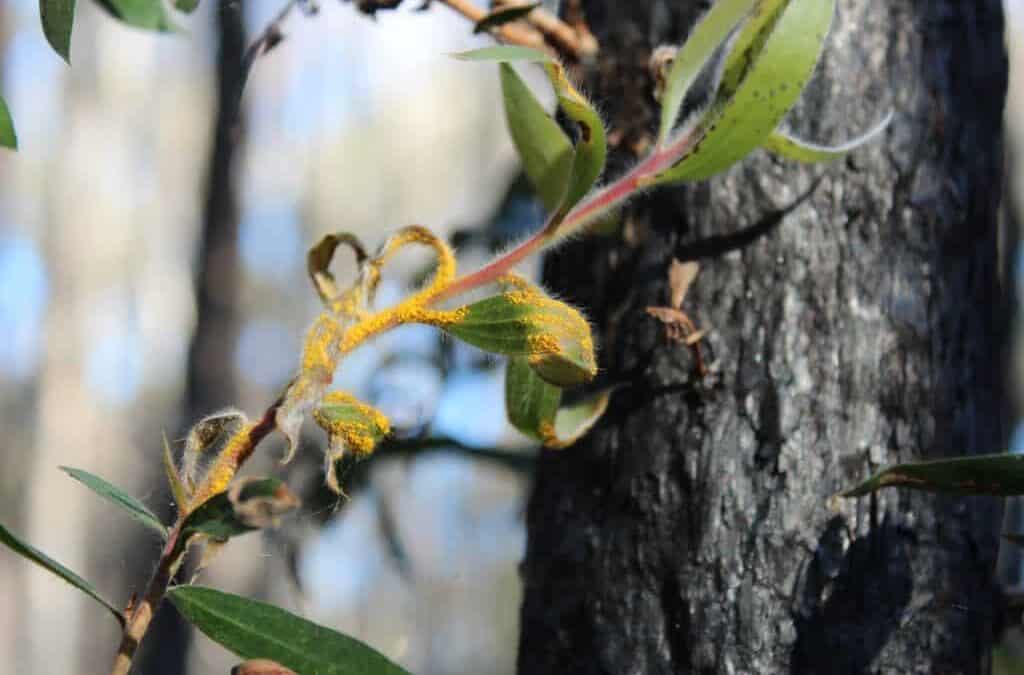
The ANPC is excited to announce that we have just received a new Environment Restoration Fund – Threatened Species Strategy Action Plan Grant. Entitled “Enabling future recovery of Rhodomyrtus psidioides by safe custody ex situ” the ANPC will be working with various state government departments and botanic gardens over the next 13 months to undertake a Myrtle rust pilot dispersed-custody model to enable sampling and repropagation of surviving wild germplasm, including genetic management program. R. psidioides faces extinction in the wild due to Myrtle Rust, and survivors do not set fruit. Seeds are unorthodox, and ex situ germplasm must be kept as whole-plant collections (pending tissue culture, feasibility uncertain), and dispersed for safety. A large genebank is essential for screening for rust resistance genes, and for eventual ecologically safe reintroduction.